
Advice: Planning A Funeral Service
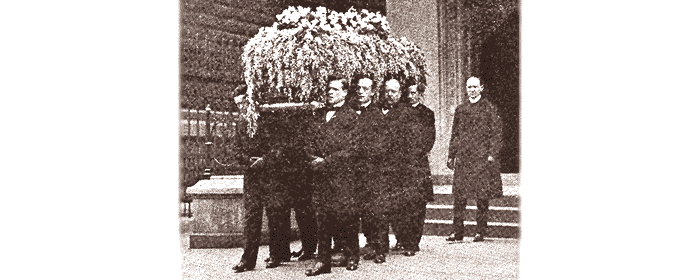
'Now, when I die,
Don't think I'm a nut,
Don't want no fancy funeral,
Just one like ol' King Tut.'
|
I lost one of my childhood friends to brain cancer and, at age 9, was a pallbearer at his service. Since that first time, I've had a lot of exposure to funerals and the death industry. I've carried my share of caskets, advised a number of people on arrangements and have been responsible for planning several funerals. In the mid-1970s, I even attended an American Funeral Directors Association annual trade show - where the latest model hearses were displayed on spotlighted rotating plinths just like at a car show.
I hadn't participated in planning a service for over 20 years. Recently, I arranged for a family member's funeral and found that the business has changed substantially.
Here are six new things I learned about funerals:
1. Never prepay. When the pre-need, prepaid contract was signed eighteen years ago (by the now-deceased, who did so because she didn't want to be a burden to anyone), it was a complete package funeral/burial deal, since the funeral home and cemetery were owned by the same parent. The parent company subsequently went bankrupt and the two entities now have different owners. Promised interest on these funds has never been paid because the trust fund has been poorly managed by the holding corporation.
Better to set aside the money in a money market or conservative mutual fund (in a joint account with someone who can access it) and use it to pay for a funeral when needed.

Twenty years ago, funeral homes used to send a bill, offering a hefty discount for fast pay. (I seem to recall 10% off if full payment was received in 5 days.) Now everything is prepay - cash, check, Visa or MasterCard. No discounts.
2. The casket showroom has disappeared. That space has been turned into a merchandising extravaganza with track-lit slatwall panels showing urns, trinkets, color samples and swatches, markers, flower arrangements, scale models of burial vaults as well as corner sections of caskets rather than the real, full-size box. These corner sections are "less intimidating to families", I was told.
It seemed very department store-like to me. I prefer the old display rooms - chock full of caskets placed at different angles to one another, looking a bit like Dracula's basement.
The most expensive casket offered was a bronze number by Batesville Casket Co., called 'The Persian'. Given that The Nation Formerly Known As Persia is building nuclear bombs to vaporize Israel and then annihilate The Great Satan (that would be us), I'm surprised that Batesville hasn't changed the name to something more ... ummm ... American. May I suggest 'The Patriot'. It also begins with P. (Another story involving Batesville caskets can be found here.)
In fairness to Batesville, I must point out that the firm does offer more expensive caskets, topping out with the Promethean - a hand-polished, mirror-finish bronze casket. It has 14K gold handles and a tufted velvet interior and is "chemically protected against rust and corrosion." Sounds like the old Zeibart rust-proofing process for automobiles, especially when I read about "Batesville's 4 Point Protection Package." Aretha Franklin, James Brown as well as Michael Jackson were buried in this gaudy $25,000 model.
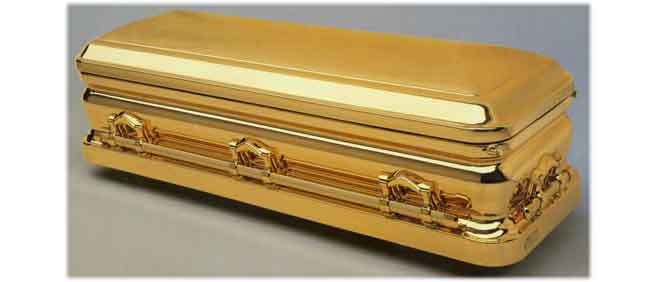
But the undertaker we used did not offer this unit, topping out with the Persian instead. And, as mentioned previously, they only had a piece of it on display.
This may just be my Car Guy Gene kicking in, but if you want to sell me a $7,000 casket, you'd better have the whole thing on display. I'll never buy a an S-Class Mercedes if all I can look at is a fender and a photo. By the way, you no longer have to buy caskets or urns from a funeral director. You can purchase them online - even Costco sell them.
3. You can take it with you. Some wood caskets now have special little slide out drawers in the lid to hold mementos, jewelry, medals and trinkets to be buried with the deceased. Now grave robbers will know exactly where to look.
4. There is more (tasteless) merchandise than ever. Necklaces with tiny vials for cremains, inscribed glass memorial paperweights, personalized-engraved photo frames, etc. And the seemingly-ubiquitous Thomas Kinkade-branded dreck (see my December 7, 2005 blog posting for more comments about Tommy K. stuff). Something for every (bad) taste and pocketbook, I guess.
Since the funeral industry seems to be selling everything else, I was surprised no one offers a line of stuffed animals for the grieving: Doleful Dog, Mourning Moose, Remorseful Rooster, Hysterical Hippo, Sad Seal, Woeful Wallaby and Outcast the Otter, representing that special friend or relative that everyone hopes doesn't show up at the funeral.
A battery-powered version of Outcast could also be sold. It would drunkenly sing hymns off-key and vomit at the push of a button.
Of course, no plush funeral collection would be complete without the talking Evangelical Egret, squawking endlessly about "Jesus" to anyone it encounters. Favorite phrase: "Are you saved yet?" We experienced one of these obnoxious, proselytizing phonies this week. She was more annoying than an obsessive-compulsive version of Ned Flanders on crack.
5. There is no longer as much 'service' in funeral service. Funeral fees used to include all the little things - placing the obituary in the newspaper, visitor sign-in books, use of the funeral chapel, little memorial cards with the deceased's name imprinted on them, etc. No more. These are now 'unbundled' and must be paid for separately.
When asked about the obituary, the funeral director handed us a guide sheet and told us to contact the newspaper directly. The pre-purchase contract called for 'use of facilities' but we were told this simply meant the refrigerator and other backroom equipment. Use of the chapel for a half-hour service was quoted at $450 additional. We arranged to hold a memorial service elsewhere.
My daughter purchased a very nice guest book at a retail stationery store - at less than half of the funeral home's asking price. She also produced a large collage of photos mounted on posterboard which we displayed at the service. My son, a professional graphic artist, designed a moving and meaningful four-color tribute folder and had it printed. My daughter-in-law supplied baskets to hold sympathy cards and to dispense the memorial folders. We arranged for flowers ourselves.
For background music at the service, we played a CD which I burned - a selection of the deceased's favorite piano instrumentals. As a family, we turned this situation into an advantage, making the service unique, personal and far more memorable than a standardized, packaged funeral parlor offering.
Such unbundling and revenue-seeking is apparently a common practice in the funeral biz today and may, indeed, be beneficial to some consumers but it is disconcerting to anyone used to the 'old' package system.
Speaking of revenue-seeking, the local newspaper used to publish obituaries at no charge. Faced with declining readership and subscription dollars, it now charges $150 to $200 a pop, paid in advance. More, if you want a photo of the deceased to accompany the death notice.

Obituaries and death notices have changed greatly over the years; I have some comments on that here.
Looking at my great-grandfather's 1920 death notice, I noticed that it didn't even mention all his nine children, only the priest and the nun. Nothing about his late wife, to whom he had been married for 50 years until her death 12 years before.
Times were different then and - unless famous or notorious - one's passing went without much fanfare or biographical detail.
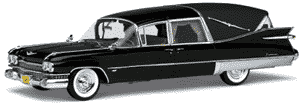 6. Please die on schedule. In the 1950s, a funeral industry trade association used to run magazine ads with the theme "we serve your needs ... in any weather ... at any hour ... in any situation." One ad featured a sketch of a well-dressed, somber man ringing a doorbell in a pouring rainstorm on a dark night. 6. Please die on schedule. In the 1950s, a funeral industry trade association used to run magazine ads with the theme "we serve your needs ... in any weather ... at any hour ... in any situation." One ad featured a sketch of a well-dressed, somber man ringing a doorbell in a pouring rainstorm on a dark night.
It has now become customary to charge an extra fee if an after-hours pickup is required. I don't know if there's an additional fee if it's raining. Well, the hearse gets dirty and someone has to pay for washing it.
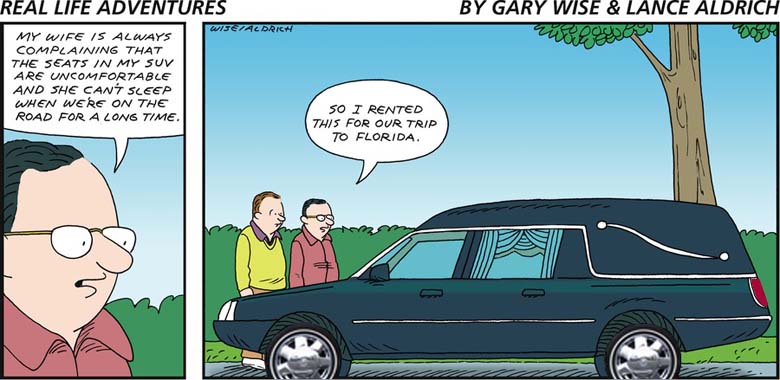
Try to pass away during regular business hours, unless you want your estate to fork over an extra $85 or so.
In 1958, only about one in 28 Americans were cremated upon death. In 1980, less than 5% of deceased Americans were cremated. By 2018, the percentage had risen to over 53%, according to the National Cremation Association of North America. By 2030, the National Funeral Director's Association predicted that only 23% of the dead will receive traditional casket burials. Washington state - where I live - has the highest per-capita rate of cremation in the U.S. - over 76% in 2016.
With the traditional market for caskets, burial vaults, large mausoleum spaces and other, high-margin items in decline, funeral homes are scrambling to cut costs and find new sources of revenue.

Markets have always changed and evolved ... but now changes occur at a much faster rate. In that regard, there are parallels between the Detroit auto biz and the funeral biz (especially in the areas of unbundling/decontenting). And, I suppose, many other businesses - Kodak, Polaroid and Sears to name a few. And, of course, newspapers.
Here's another thought on the 'unbundling/decontenting' practice: When you invite your customers to act as general contractors for service items, some will do just that - finding their own subcontractors and sources. By making your customers into educated purchasing agents, aren't you diminishing customer loyalty to your firm? Is this a good long-term business model for an industry? I don't think so.
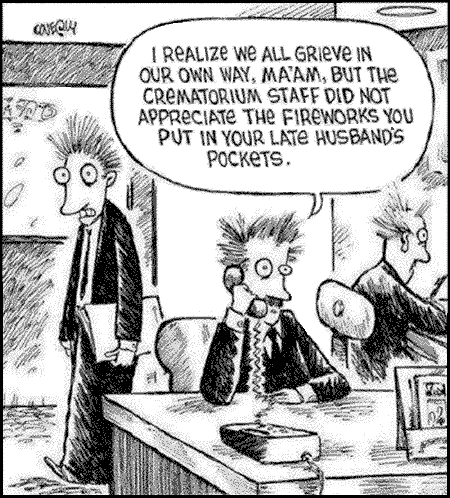
Since this is primarily a automotive-themed website, I'll close this posting with two car-related funeral experiences:
1. My earliest memory is of me staring at the chrome hubcap on the sidemount of a Packard (with the characteristic red hexagon in the center) while being held by my mother. I was two years-old. She was keeping me entertained by showing me my reflection in the chrome while at a graveside service for one of her uncles. (The Packard was probably a limousine or hearse.) Perhaps this explains my lifelong fascination with cars.
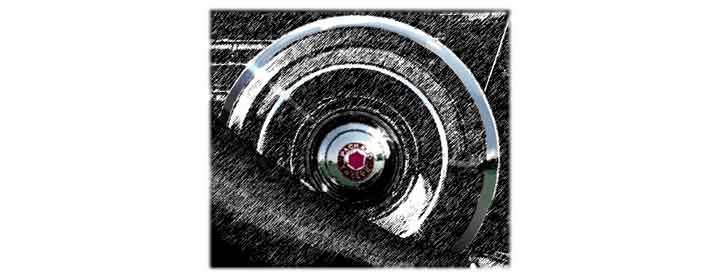
2. When growing up, I lusted after Cadillacs. Caddys of the 1950s were easily recognized because of those gleaming red taillights perched atop those unique finned rear fenders. And the sparkling chromed, egg-crate front grilles. Cadillacs were distinctive and flashy, letting you know that the owner was someone who had 'arrived.' Caddys were the sheet-metal equivalent of the sartorial ensemble of a navy blue double-breasted blazer with brass buttons, white trousers and tasseled, bone-hued loafers, worn by a man holding a large cigar. Flush - and not subtle about it.
My first ride in a Cadillac was at my aunt's funeral in 1954. We traveled to the cemetery in a limousine - a sleek-black '54 Caddy Series 75 with the now-iconic '50s Caddy tailfins. I rode in the collapsible jump seat. I remember getting yelled at by my parents for playing with the power window switches and running the windows up and down on a cold, windy December day.
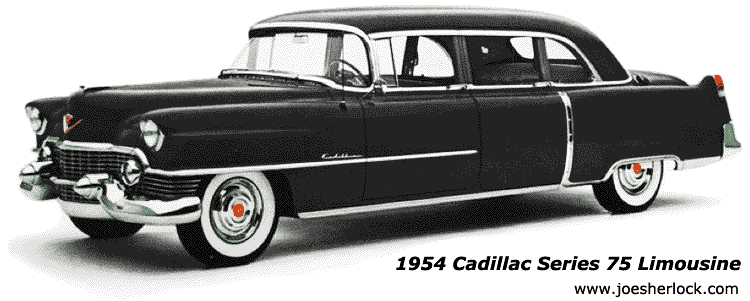
Even in the jump seat, I had a comfortable ride in that Cadillac. It seemed to ride on a sheet of glass, probably helped by the Caddy's fat balloon whitewall tires.
I instantly acquired a taste for luxury.
Sum Up: A funeral is an opportunity to honor the life of the deceased in a meaningful, personal way. A proper service brings comfort and a degree of closure to the survivors.
Don't let the hype, dreck and merchandising get in the way. (originally posted 12/16/05, last updated 8/14/20)

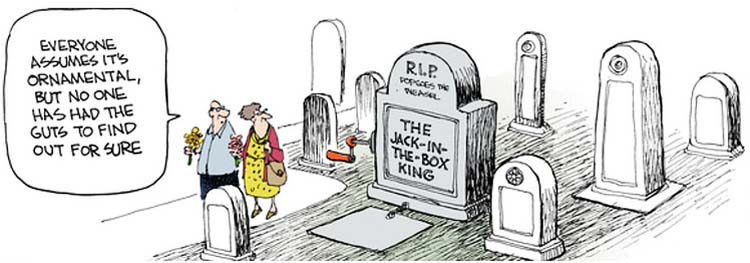
Other Pages Of Interest
copyright 2005-20 - Joseph M. Sherlock - All applicable rights reserved
Disclaimer
The facts presented on this website are based on my best guesses and my substantially faulty geezer memory. The opinions expressed herein are strictly those of the author and are protected by the U.S. Constitution. Probably.
Spelling, punctuation and syntax errors are cheerfully repaired when I find them; grudgingly fixed when you do.
If I have slandered any brands of automobiles, either expressly or inadvertently, they're most likely crap cars and deserve it. Automobile manufacturers should be aware that they always have the option of trying to change my mind by providing me with vehicles to test drive.
If I have slandered any people or corporations, either expressly or inadvertently, they should buy me strong drinks (and an expensive meal) and try to prove to me that they're not the jerks I've portrayed them to be. If you're buying, I'm willing to listen.
Don't be shy - try a bribe. It might help.
|
|

